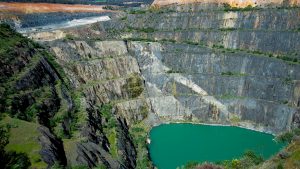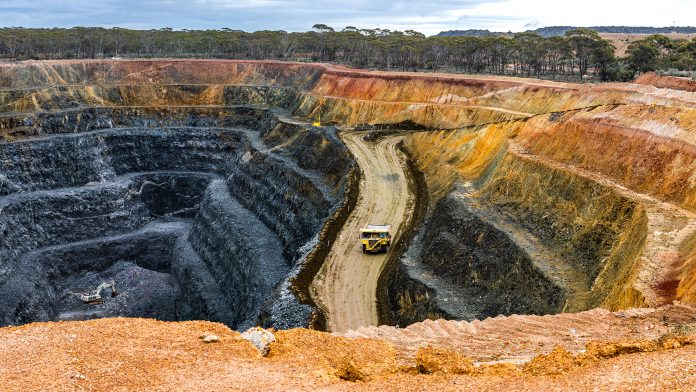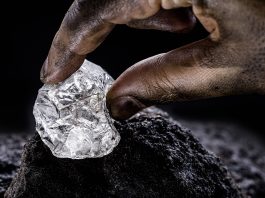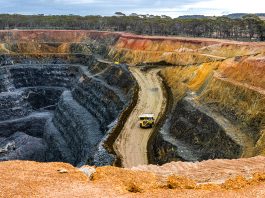Dr Sandra Occhipinti and Dr Chris Vernon from CSIRO outline the role of the research organisation in revolutionising Western Australia’s critical minerals supply chain.
Critical minerals are integral to the development and manufacture of modern technology. With a demand that shows no sign of slowing, the importance of efficient, extensive exploration and processing is only increasing.
Innovative technologies are enabling the discovery and utilisation of critical minerals on a much larger scale. Places that have previously been, or are currently being, mined for certain minerals are also being re-examined to unlock the huge potential for other minerals lurking just beneath the surface.
Western Australia (WA) is one such place involved in this advancement, hosting a vast supply of critical minerals.
Increasing excavation and research is leading groups, such as Australia’s national science agency, CSIRO, to realise this supply may be considerably greater than previously imagined.
CSIRO is now working not just to help discover these deposits but also to revolutionise Western Australia’s critical minerals supply chain.
The Innovation Platform spoke with Dr Sandra Occhipinti, from the CSIRO Discovery team, and Dr Chris Vernon, Critical Minerals Lead at CSIRO, to discuss the current critical minerals landscape in Western Australia and CSIRO’s role in researching, developing, and improving the supply chain.
What is the current landscape for the development of Western Australia’s critical minerals?
Sandra Occhipinti (SO): It is very positive. We know where a lot of deposits are, but we also haven’t really been looking for them in earnest. This leaves great potential for new discoveries in Western Australia.
In Australia and in the West, we often talk about exploration through cover. This is because we look through thick cover to find deposits. In the short term, I don’t think that’s going to be the case for critical minerals, as there hasn’t even been much exploration for them in shallow cover.
Western Australia’s geology is perfect for forming almost all critical minerals. It is home to old nickel-type deposits, as well as nickel found in younger rocks, and rare earth elements in different types of clays, such as carbonatites.
A recent rare earth discovery has been made near the boundary between WA and the Northern Territory. This is an enormous deposit that we did not know was there previously.
Lithium is another mineral of particular importance in the region. We have been focused on lithium exploration in Western Australia for slightly longer than our work in rare earths, but the potential for further lithium development is huge.
The Yilgarn Craton is a large craton that constitutes the bulk of the Western Australian land mass. The Yilgarn shows great promise for lithium mining, with a major deposit in the town of Greenbushes, as well as potential in the Pilbara, Gascoyne, and Kimberley regions. It is ripe for the picking.
Chris Vernon (CV): It is quite telling that, for a long time, the Greenbushes mine was a tin mine and then it became a tantalum mine. It was then made clear that the area hosted lithium deposits, which kickstarted lithium mining in the area. As excitement around lithium built here, people then started to explore other areas, such as Pilbara, where they found more lithium.
Graphite is another interesting mineral. Initially, graphite deposits were known in South Australia, but we have now found an occurrence of graphite in Western Australia near the border. I also received calls about potential graphite discoveries in Manjimup, a town a few hundred kilometres south of Perth, which were later been confirmed to be true.
These examples prove that, until you start looking for things, you don’t find them. The rapid demand for critical minerals in recent years has put a strain on supply chains and has encouraged people to start looking for more.
What are the barriers facing the development of a stable critical minerals supply chain in WA? How can these be overcome?
SO: There are no real barriers to the exploration of Western Australia’s critical minerals. It has always been fairly positive. Mineral exploration companies are aware of the procedures to complete to get clearances and we have a fairly solid infrastructure. For example, we have good ports and solid roads to ports. As you go further east, the infrastructure is not as strong, but it is not something that cannot be overcome.

The main challenge is that there is not enough industry funding to go from defining a deposit, to mining it here, and then processing it. That is something we need to overcome as many of the companies looking for critical minerals are very small. Therefore, whilst they are able to define a deposit, they may not have the capital to then start mining. Even if they are able to start digging, processing the deposits brings a whole other set of challenges.
As most of the deposits are likely to be small, we may have to consider similar methods to the common mills or processing plants that they used in the goldfields in the early days.
In some areas, we do not have established mining communities. However, with new deposits being discovered in various regions, there will need to be investment made into their infrastructure. This will also require better planning.
CV: I agree that investment is a major barrier to Western Australia’s critical minerals industry. These companies don’t have huge amounts of money.
Sandra is absolutely right about the processing. If we take the nickel industry as an example, a lot of companies will just crush rock, make a concentrate, and then sell it to another organisation. It might go on a truck, to a port, to a ship, or to a common user facility. It becomes a really big money game the more processing you do.
Nickel is expensive to mine and to make into concentrate, and then it becomes even more expensive when you want to start chemically altering it into a different sort of product.
How is CSIRO supporting the acceleration of critical minerals research and development in WA?
SO: Our work centres around looking for more efficient ways to detect something through cover or in a rock. We have a current project called Indicator Minerals for Nickel. By taking a sample from a mafic or ultramafic body and analysing it, the team are aiming to be able to determine the the prospectivity for nickel sulfides in the rock being analysed.
We are also looking at regolith – the layer of unconsolidated material covering solid rock. We use techniques such as UltraFine+, which focuses on the ultrafine fraction of the regolith profile, and analyses it.
We are also studying how the landscape developed through time, in order to understand where the signatures have come from in a landscape domain. We have found that UltraFine+ works and we are very happy with that in the landscape domain type work and next-generation analytics. We input the geochemical data into those domains and use Machine Learning methods and sensible data analytics to determine if there is an anomaly in a particular domain. This instils confidence in the data being produced.
We have also built techniques to enable numeric data, such as spectral or petrophysical data, from a drill core to be processed in a software solution called Data Mosaic. It is multivariate and multiscale, so it can compile a wide range of different data to give companies accurate downhole logs. This is important so that they don’t have to relog their core later, because every geologist logs it differently.
As part of this, we recently developed a system allowing spectral data to be taken directly from a high logger, or a spectral file, and be processed in Data Mosaic. This has led to very accurate logging and is now used by several companies. We even had an intern looking at the super pit, and in a couple of months he learned how to code and built a very accurate model of the super pit. This has never been done before with all those drill holes, but he was able to relog that core with a laptop.
The other advantage is that you’re taking data that companies are collecting anyway and making sense of that data, so people can safely carry out work out of harm’s way. You can diversify your workforce that way as well. We are focused on uplifting the work that is done by geoscientists in the field; increasing the accuracy of the results they get back; getting rid of false positives or negatives; and looking at ways we can help the industry diversify its workforce to be more attractive.
CV: Beyond the finding, which is incredibly important, there is also the digging and utilisation. We have some technologies already rolled out and we are looking at further technologies around ore sorting.
In the processing space, we are looking at new ways to process with lower cost. Effectively, it costs money to process anything that has been dug up, meaning that money can be wasted if you dig up substandard parcels of rock. Through ore sorting, we are attempting to put higher grades to the plant, and one of those technologies has already been commercialised. We are working on other sensor technologies to determine if there is a substandard parcel of something moving up the conveyor belt, so that we can tip it off and avoid increased costs.
There are two significant factors about the critical minerals industry that indicate why it thrives in some countries but not others. In some countries, environmental, social, and governance (ESG) standards and wages can be low. To compete with these countries but in a responsible manner, we must assess the processing strategy.
The two main drivers in processing, and in anything we do, is to improve the environmental footprint and cost. There are a number of approaches to improving the cost and a lot of those involve thinking a little bit differently about the process. Traditionally, something that might have been developed around 60 years ago isn’t necessarily the best way of doing it now. We are therefore looking at removing steps and speeding up the process to create a more valuable product.
We work in house on our own strategic projects, developing intellectual property so that one day we can commercialise it. We also work directly with companies that realise they have a problem or a bottleneck and want our assistance.
Please note, this article will also appear in the fifteenth edition of our quarterly publication.









